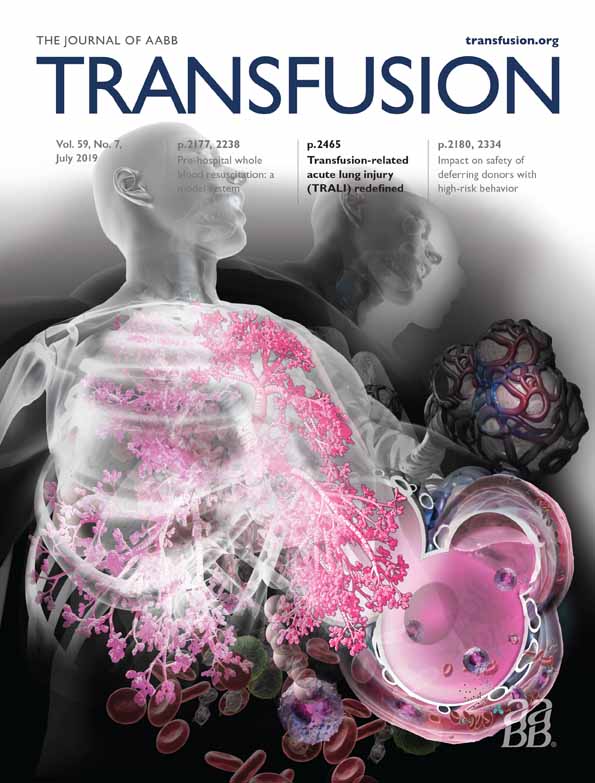Inactivation of yellow fever virus in plasma after treatment with methylene blue and visible light and in platelet concentrates following treatment with ultraviolet C light
Abstract
BACKGROUND
Yellow fever virus (YFV) is endemic to tropical and subtropical areas in South America and Africa, and is currently a major public health threat in Brazil. Transfusion transmission of the yellow fever vaccine virus has been demonstrated, which is indicative of the potential for viral transfusion transmission. An approach to manage the potential YFV transfusion transmission risk is the use of pathogen inactivation (PI) technology systems, such as THERAFLEX MB-Plasma and THERAFLEX UV-Platelets (Macopharma). We aimed to investigate the efficacy of these PI technology systems to inactivate YFV in plasma or platelet concentrates (PCs).
STUDY DESIGN AND METHODS
YFV spiked plasma units were treated using THERAFLEX MB-Plasma system (visible light doses: 20, 40, 60, and 120 [standard] J/cm2) in the presence of methylene blue (approx. 0.8 μmol/L) and spiked PCs were treated using THERAFLEX UV-Platelets system (ultraviolet C doses: 0.05, 0.10, 0.15, and 0.20 [standard] J/cm2). Samples were taken before the first and after each illumination dose and tested for residual virus using a modified plaque assay.
RESULTS
YFV infectivity was reduced by an average of 4.77 log or greater in plasma treated with the THERAFLEX MB-Plasma system and by 4.8 log or greater in PCs treated with THERAFLEX UV-Platelets system.
CONCLUSIONS
Our study suggests the THERAFLEX MB-Plasma and the THERAFLEX UV-Platelets systems can efficiently inactivate YFV in plasma or PCs to a similar degree as that for other arboviruses. Given the reduction levels observed in this study, these PI technology systems could be an effective option for managing YFV transfusion-transmission risk in plasma and PCs.
CONFLICT OF INTEREST
HMF and DCM received partial funding for this study from Macopharma. JJF, RAH and PRY report no conflict of interest. SR, FT, and CS are employed by Macopharma (Tourcoing, France), the company that developed the THERAFLEX UV-Platelets and THERAFLEX MB-Plasma systems. UG and AS work for DRK-Blutspendedienst NSTOB, a blood donation center that collaborates with Macopharma on the development of pathogen inactivation systems for platelets and plasma.




